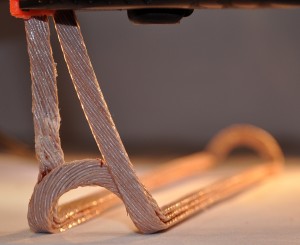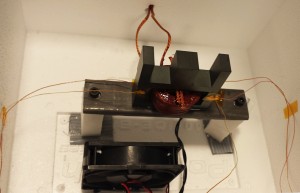High Frequency Airgap Windings for High Power Density Electrical Machines
High Frequency Airgap Windings for High Power Density Electrical Machines
MSEE student Jonathan Martin with adviser K. Haran
The highest power density megawatt-class electrical machines till date have been developed on the order of 9.16 kW/kg employing cryogenic high-temperature superconductor windings. To translate the same class of electric machines for aerospace applications using air-cooling, very high-frequency armature windings ranging from 3 kHz to 10 kHz must be considered. The high frequency currents, especially in an airgap-winding configuration pose significant ac loss challenges and thus require highly stranded Litz conductors.
Over the course of a year our team has been rigorously developing a finite element model (FEM) of the armature windings to conduct a detailed analysis of ac losses, which are primarily due to proximity and skin effects. Analysis results were used to optimize the conductor geometry as well as the strand number to achieve the highest copper-fill factor per slot. Additionally, the FEM results were complemented by a series of bench tests to incorporate any manufacturing considerations before a detailed conductor design was finalized. These bench tests included various end-winding geometries to understand the variability and manufacturing methods of Litz wire. One result is shown in Fig. 1.
Lastly, for the purpose of verifying the FEM ac loss calculation, we set up a secondary test bench to experimentally measure electric losses on a smaller topology by using a ferromagnetic E-core as the flux carrying structure. Since these losses were expected to be small, the team decided to utilize indirect caliometry to relate a temperature difference to a given power loss, as shown in Fig. 2. This experiment is ongoing, and future work will be focused on matching these results with the FEM calculations to achieve agreement between the experiment and the numerical model. This research is funded by the NASA Fixed Wing Project and the Grainger Center for Electric Machinery and Electromechanics.

